Deserts are places with very little or no rainfall in a year. While they look very uninhabitable, you may be surprised to see beautiful animals that live in deserts. Here in this article, we have listed thirty-three animals that live in the desert for you.
Table of Contents
1. Armadillo (Dasypodidae)
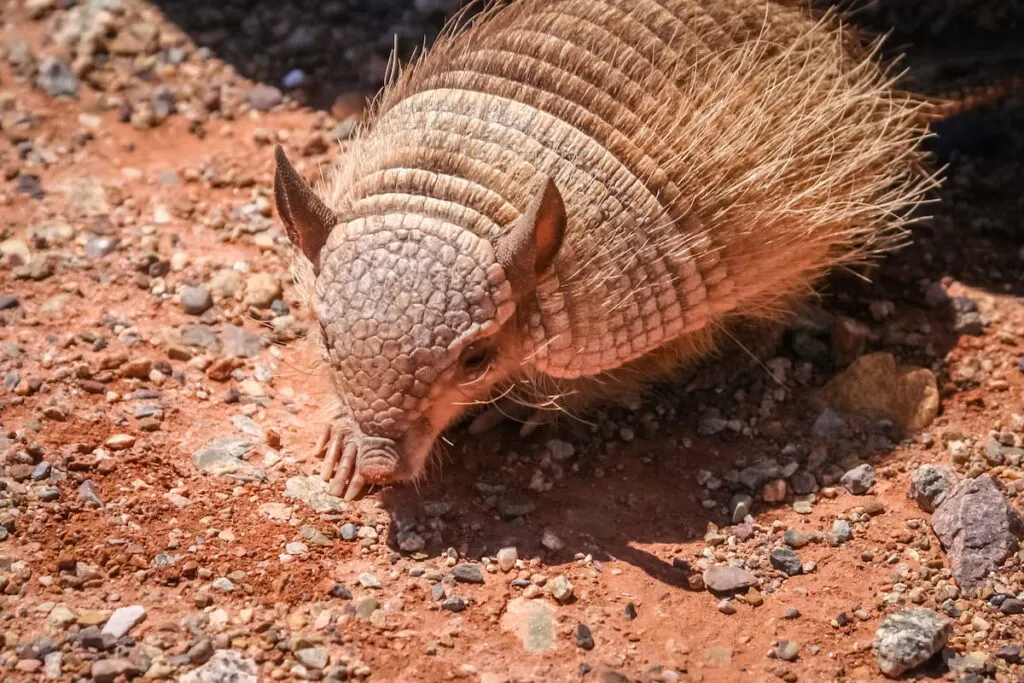
Armadillos are small or medium-sized mammals with hard shells that help protect them from danger.
When they sense the presence of danger, such as a predator or loud noise, they will curl up and protect themselves with their shells. Armadillos eat insects, spiders, and other invertebrates. They also eat plant products if they cannot find little animals.
2. Arabian Wolf (Canis lupus arabs)
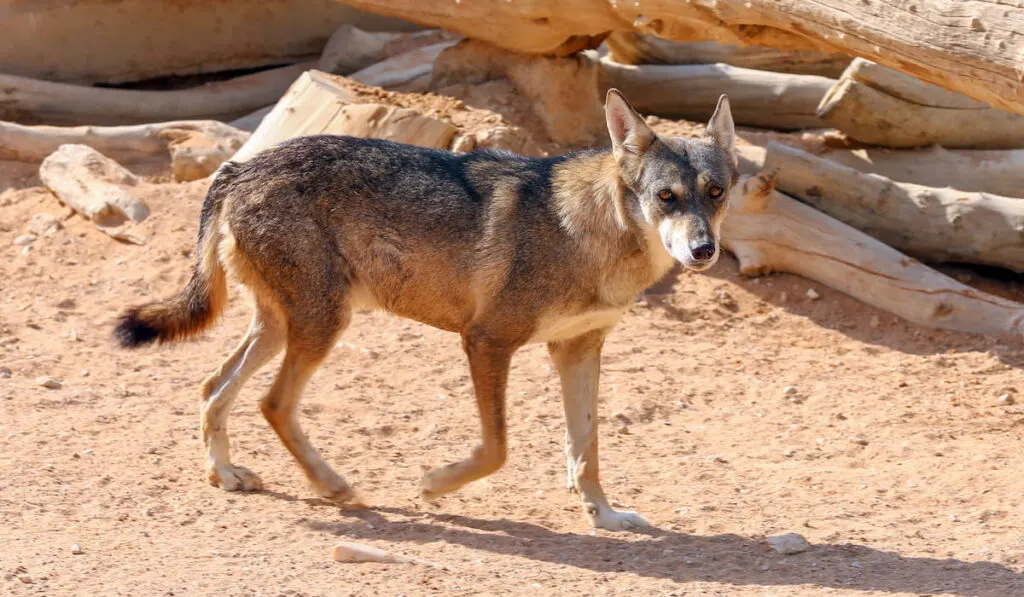
Arabian wolves are wolves that are well-adapted to living in the deserts of the Arabian Peninsula. They are medium to large-sized and usually live in little groups, just like other types of wolves. Unlike other types of wolves, however, these mammals are omnivorous and can eat plant products if they cannot find meat.
3. Ospreys (Pandion haliaetus)

These birds are also called river hawks, sea hawks, and fish hawks. They are fish-eating birds that search for their food across water bodies. However, when they are not searching for food, you can find them in terrestrial habitats like the outskirts of deserts.
4. Lions (Panthera leo)
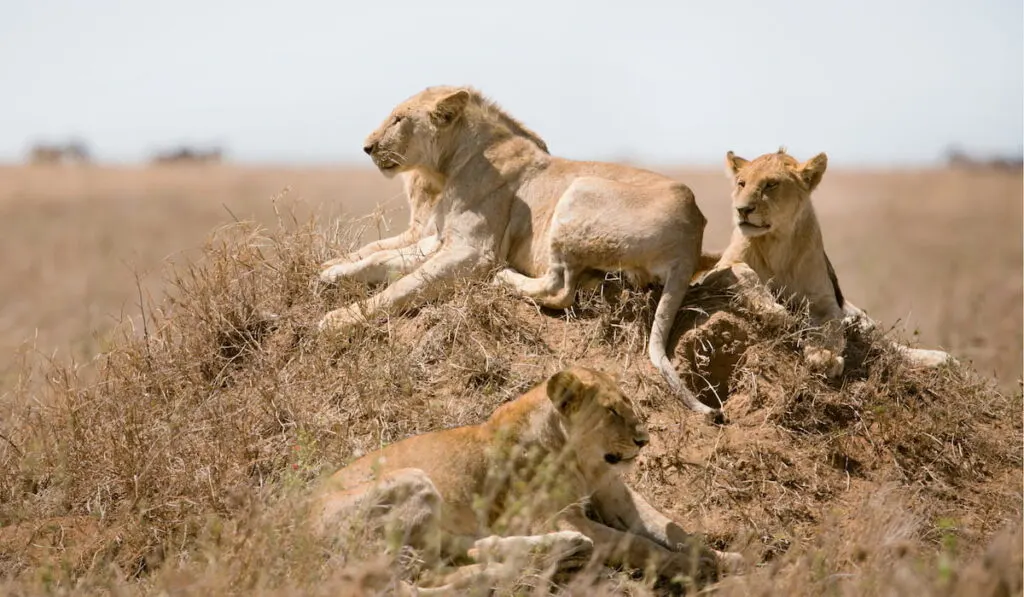
Lions are animals that live in grasslands near deserts. Lions are the apex predators of their ecosystems and hunt animals such as zebras, bison, giraffes, and even other predators such as hyenas and coyotes.
Lions have majestic roars, and their males have a mane. These animals are mostly referred to as the king of the jungle (even though they do not live in jungles).
5. Great Horned Owl (Bubo virginianus)

The great horned owl, tiger owl, or hoot owl is a type of owl that is very adaptive to its environment. The great horned owl adapts to a wide range of habitats, including deserts. It moves mostly at night, searching for rats and other smaller animals.
6. Blue Heron (Ardea herodias)

These birds live in the outskirts of deserts and other terrestrial habitats, especially in places close to water bodies. They have a long yellow beak, and they can be white, grey, or brown with some black feathers on their backs.
7. Coyotes (Canis latrans)
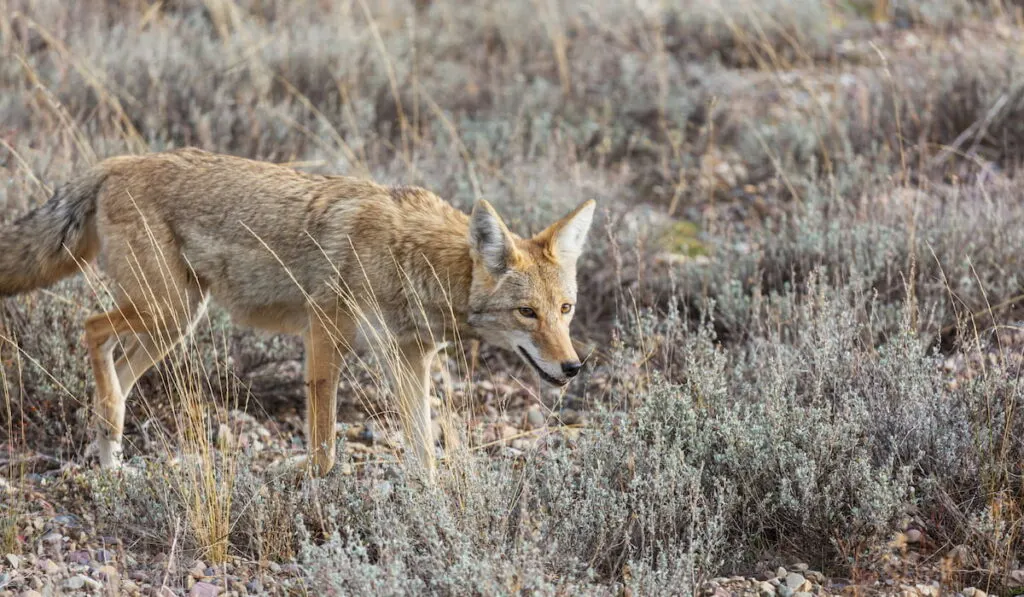
Coyotes are more like the dogs of the desert. They are well-adapted to the heat of the desert and hunt other desert animals, including smaller mammals such as rats and bats.
They also search for and will eat snakes, lizards, and larger invertebrates. Coyotes move alone and in groups. They are active during the day. They look like wolves but are slightly smaller.
8. Bats (Chiroptera)

Bats are cave dwellers that you can find wherever there are caves. This means that if there are caves in a desert, there is a high chance of finding bats there.
Bats can eat either fruit and other plant products or smaller animals depending on the species of bat. Bats are mostly active at night as sound and light of the day can overwhelm and confuse them.
9. Black Bears (Ursus americanus)

Black bears are the types of bears that do not mind living in hot places far from forests or ice. They are well-adapted to live in deserts, hunting smaller animals and any plant they can find.
Note that they’re primarily found in forests. Black bears can eat fruits and nuts if they cannot find rats and other desert animals. The color of their skin and fur helps to protect them from the sun’s radiation.
10. Desert Tortoise (Gopherus agassizii)

Desert tortoises are reptiles that you can find in the deserts of the United States and Mexico. They are well-adapted to living in the desert and look for any plant they can find. Like other tortoises, they have shells. Their shells are mostly brown.
11. Gila Monster (Heloderma suspectum)
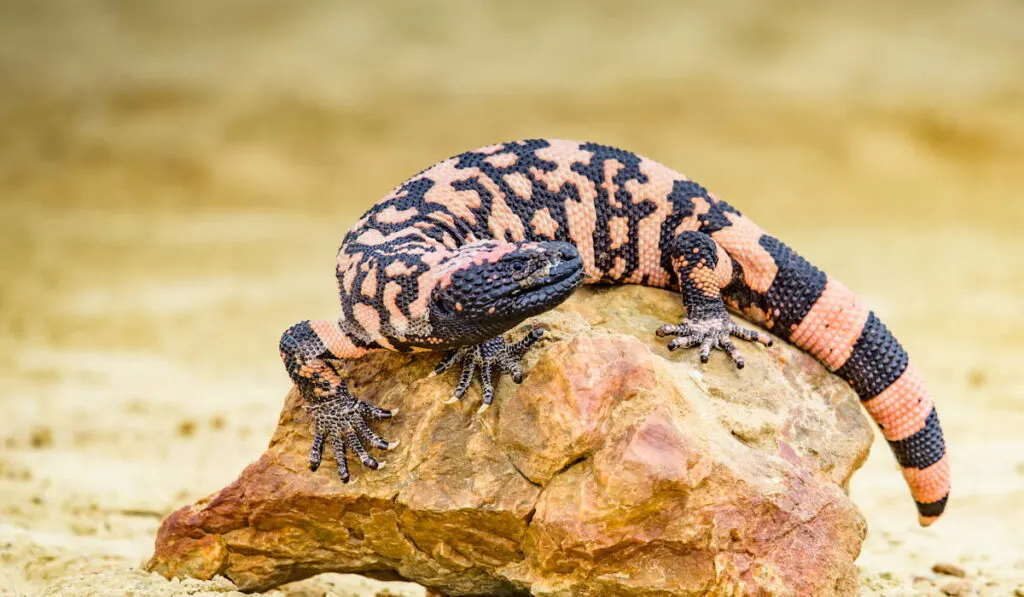
Gila monsters are dangerous reptiles that you can find in deserts and other terrestrial habitats. This reptile can live for more than 10 years and protects itself with a very toxic venom. There’s no known cure for their venom yet, so stay away from them.
12. Ostrich (Struthio camelus)

Ostriches are the largest type of bird on the earth. They have large bodies with long necks, long legs, and short beaks. Ostriches produce the largest eggs, and their eggs are a great source of protein for so many people. Ostriches are territorial birds, so do not go close to one if you find any in the desert. They are native to Africa.
13. Giraffe (Giraffa camelopardalis)
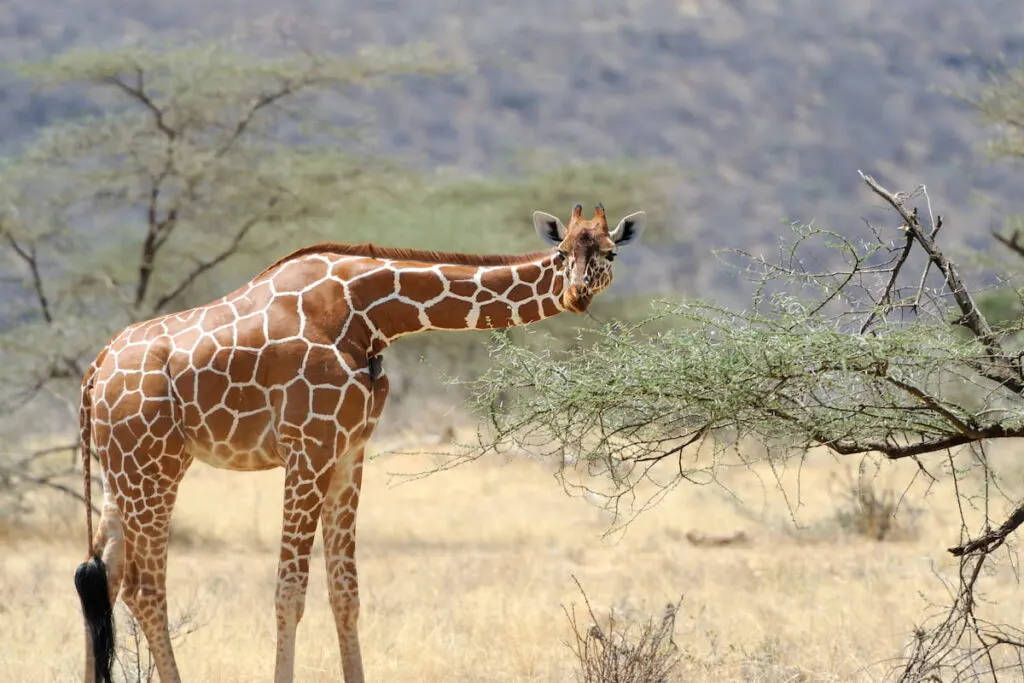
Giraffes are among the most popular animals on earth today. They are very popular because of their long legs and long necks. Giraffes also have tongues that are most likely longer than your face. They have yellowish fur with brown patterns and eat leaves from tall trees. Even though they are very tall, giraffes are preyed upon by lions.
14. Camels (Camelus dromedarius)

Camels are more like the horses of the desert. These animals are well-adapted to living in deserts as they can go without water for long since they do not feel the heat of the sun as hard as other animals do.
People rear camels for transportation and also for their meat and milk. In the past and even today, desert dwellers use camels to ride through the scorching desert.
15. Zebras (Equus quagga)
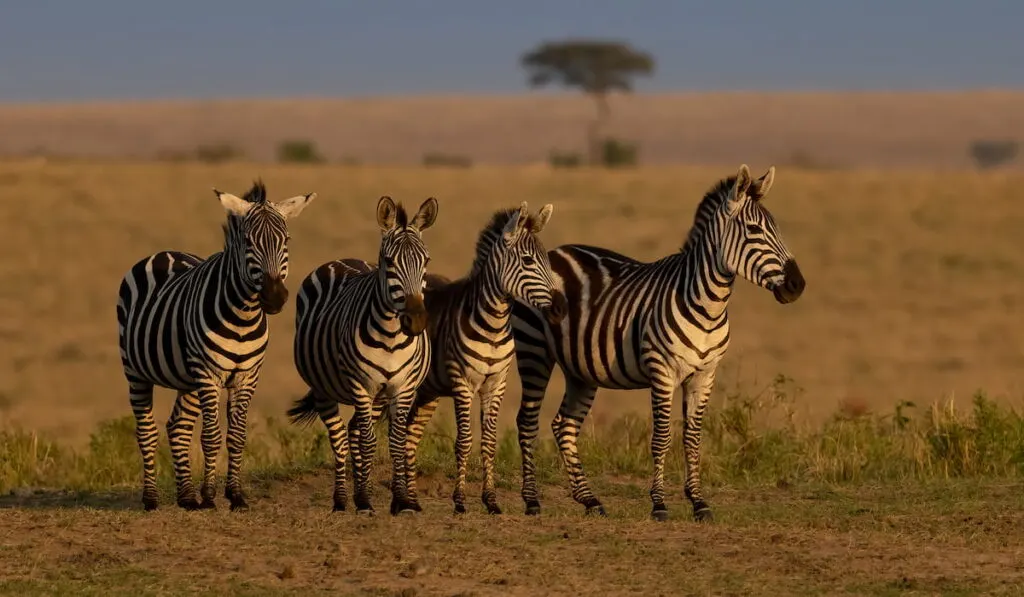
Zebras are popular animals found in the deserts of Africa. They are characterized by the black and white stripes on their skin and fur.
Zebras move in groups of more than 10,000 individuals, and they migrate from one part of the desert to another, searching for places with food, water, and shelter. Zebras usually move with bison and other animals.
16. Scorpions (Scorpio spp.)

Scorpions are arachnids that live in the desert. They have long tails with a venomous needle just behind them. While the venom of many scorpions is not lethal, some scorpions can kill you by stinging you with their needle if they feel threatened by your presence.
Scorpions eat insects, spiders, and other little animals they can find in the desert. They mostly move at night to avoid the heat of the day.
17. King Cobra (Ophiophagus hannah)
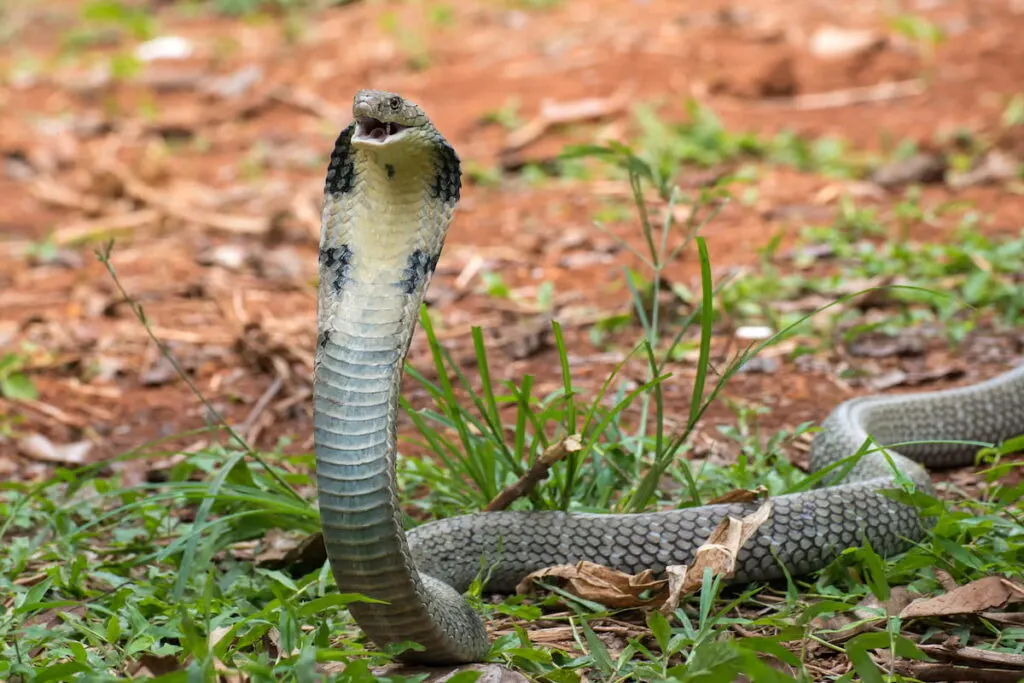
The King cobra is a very venomous snake native to some Asian countries. Like other cobras, this cobra has permanently erect fangs and hunts its prey by stinging them with its highly toxic venom.
People are studying the venom of king cobras as it has a lot of medicinal uses. Please stay far from King cobras if you find any.
18. Vultures (Cathartes spp.)
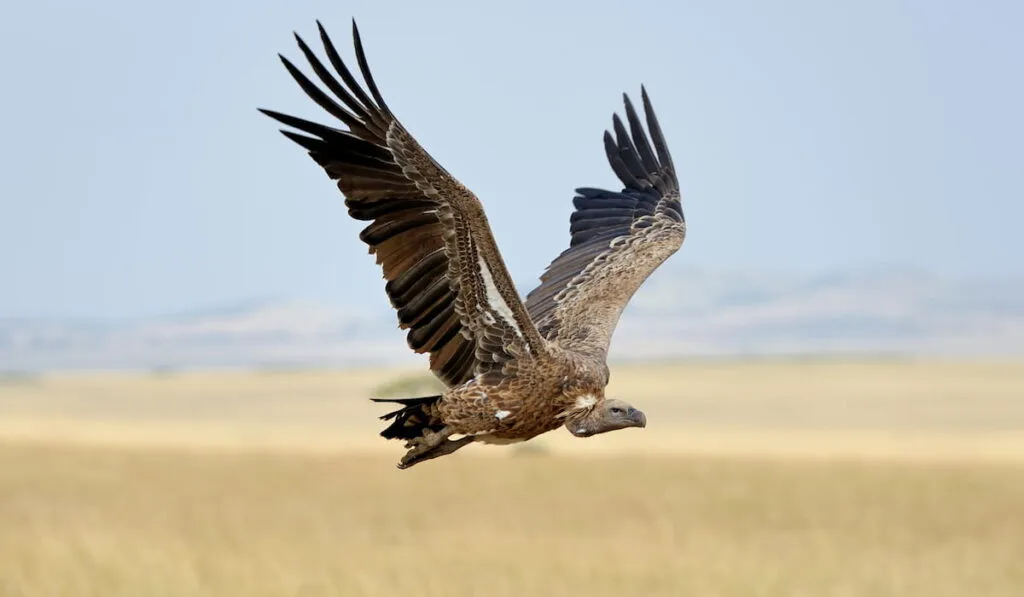
Vultures are small to large birds known worldwide, mostly as scavengers and detritivores. They are scavengers as they do not hunt for their meal but eat what they can find. They are detritivores as what they eat is most likely already decaying as they wait for the animal’s body to start decaying before they eat it.
It might not look like much, but vultures help to keep the entire desert ecosystem safe as they eat off the diseases found in dead animals that might have infected others.
19. Plains Bison (Bison bison)
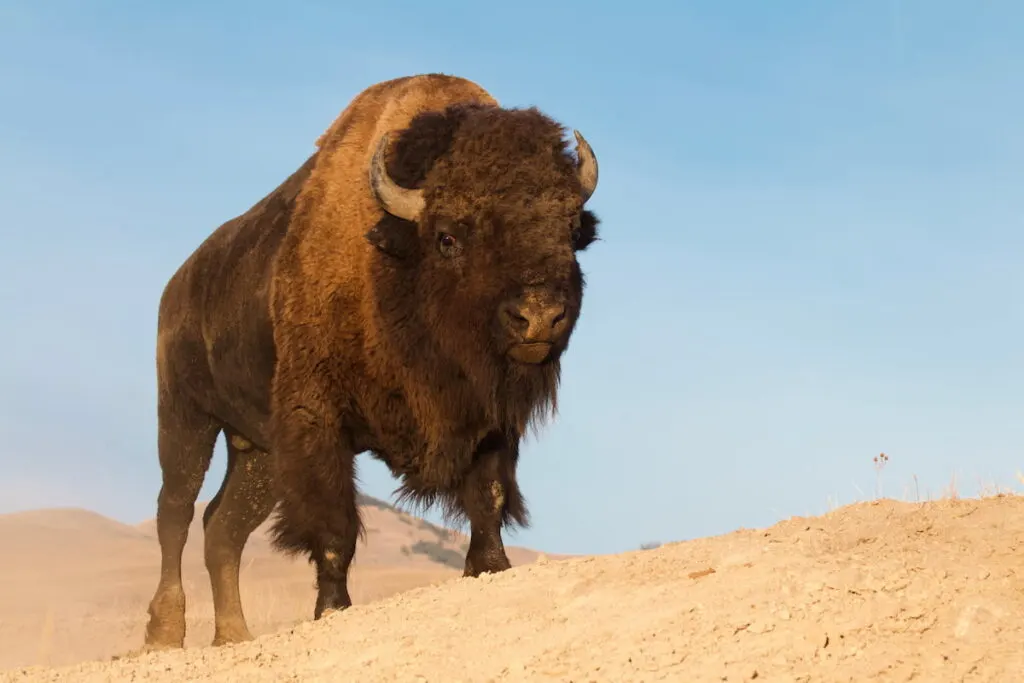
Bison are hairy animals that look just like cows in the desert. Bison moo like cows but mostly have shorter horns and long hair. They use their horns to defend themselves and fight for their mates while their fur protects them from the sun’s heat. Bison are herbivorous and are mostly preyed upon by lions and other predators.
20. Dingo (Canis lupus dingo)
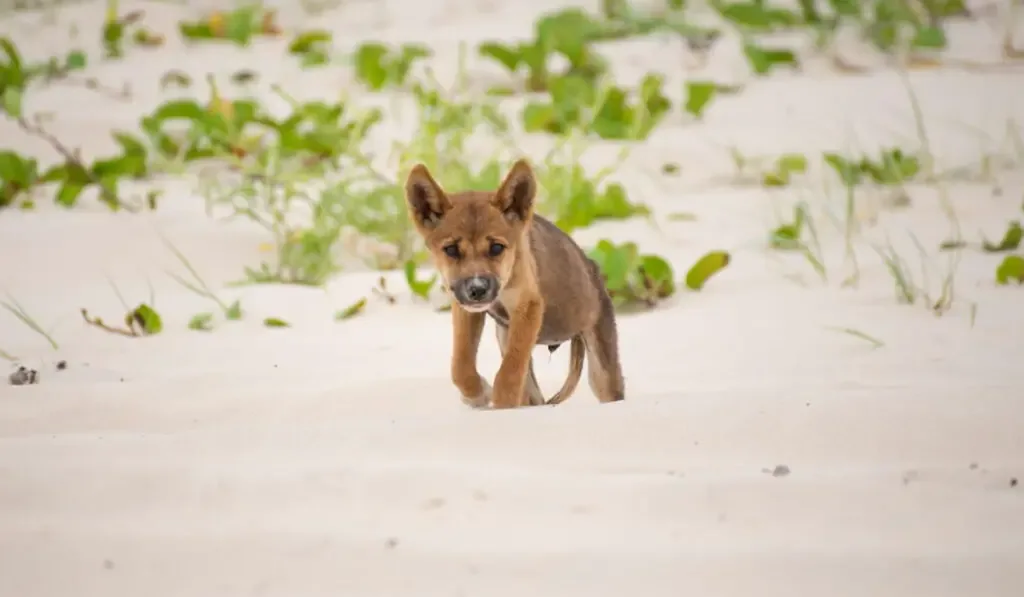
Dingoes are charming dog-like predators found in the Australian desert. These dogs may look cute but are deadly, so you do not want to go close. They have white socks on their legs and brown fur.
21. Jackrabbits (Lepus spp.)
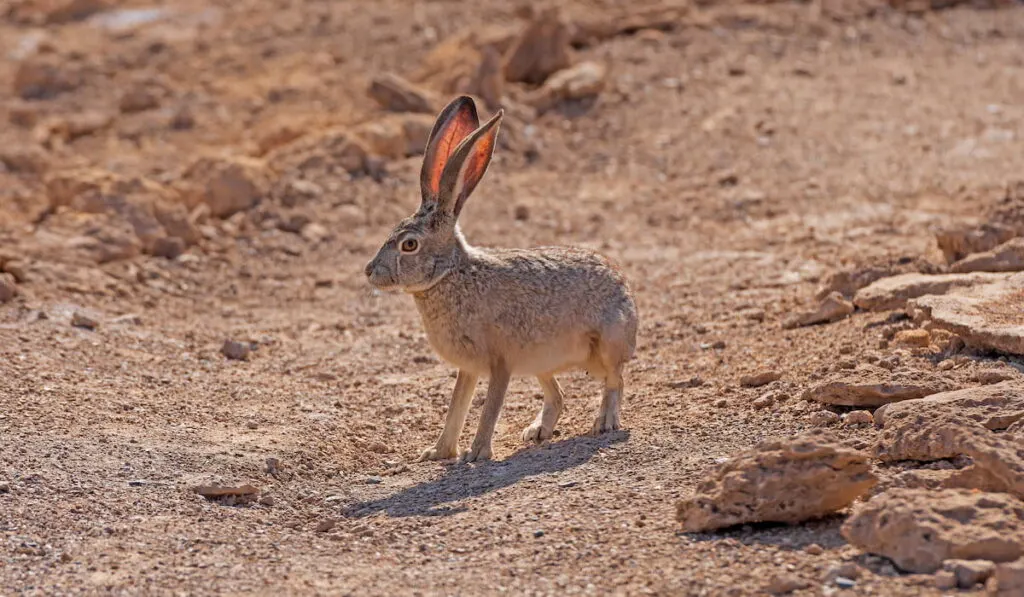
Jackrabbits are animals in the same genus as hares. They have erect ears. One special thing about them is that their young can fend for themselves just a few days after birth. They are mostly solitary but sometimes live in pairs (mostly when it’s time to mate).
22. Spiny Mouse (Acomys spp.)
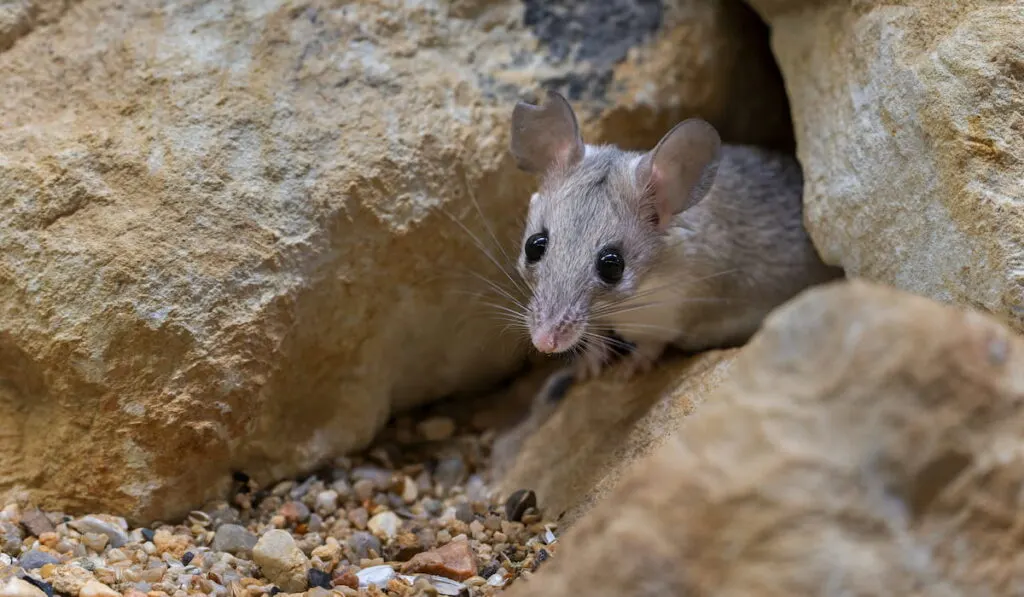
These are cute animals that are closely related to mice. Unlike mice, spiny mice have scales and bare tails. They live in deserts and other terrestrial habitats and are mostly active at night due to the heat of the desert. They have an omnivorous diet.
23. Wild Horses (Equus caballus)
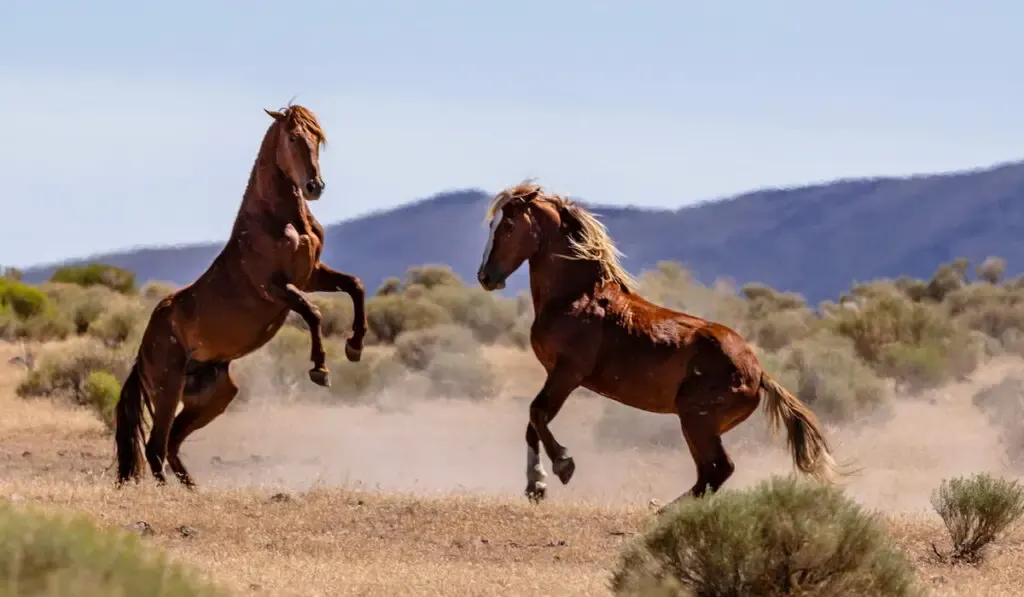
There are so many breeds of horses. While the Arabians and many other desert-dwellers have horses that are well-adapted to life in the desert, the most adapted horses are the wild ones, as they must search for their food and care for themselves without the help of humans.
These horses usually move in groups and can be found migrating from one part of the desert or other terrestrial habitat to another.
24. Sidewinder Rattlesnake (Crotalus cerastes)
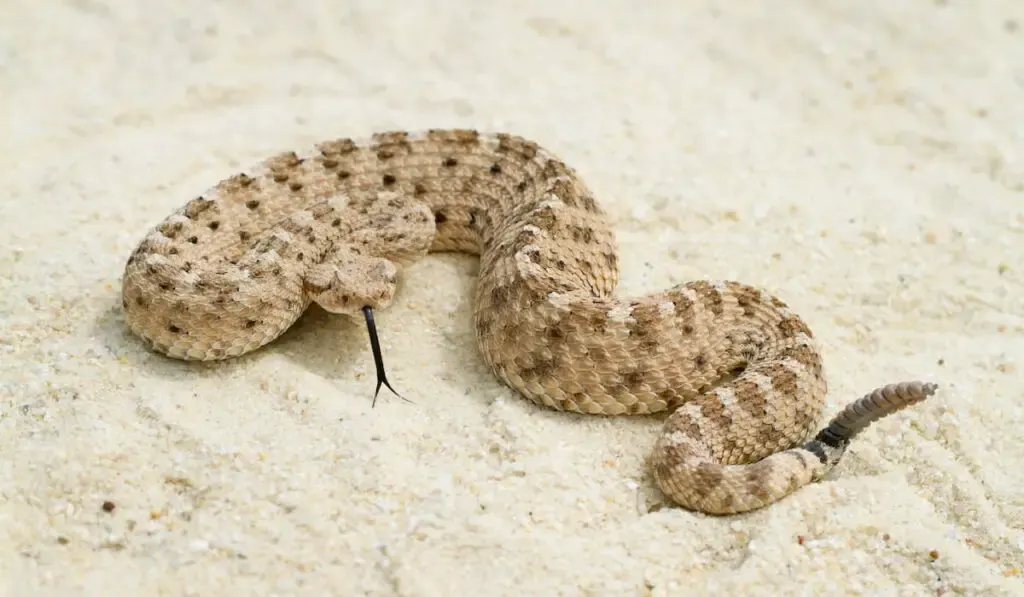
This is a venomous snake found in the desert regions of the United States. The snake moves by slithering from side to side and not by crawling straight like other snakes.
This snake’s venom is very harmful, so you do not want to go close to it if you ever see it. The snake is usually light brown with dark brown or black spots. Like other rattlesnakes, it has a rattle.
25. Gray Fox (Urocyon cinereoargenteus)

This small or medium-sized fox is native throughout North and Central America. It is an omnivore that prefers to eat meat but can eat plant products such as fruits and seeds, especially when it cannot find meat. The animals are mostly solitary but tend to search for others when it is time to mate.
26. Hyena (Hyaenidae)
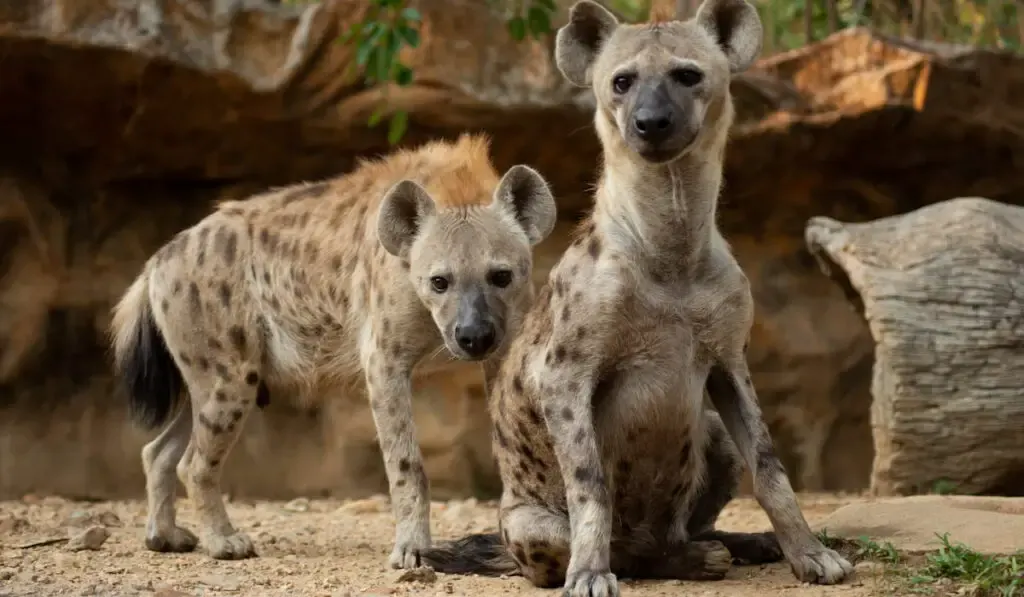
Hyenas are dog-like predators in the desert. These animals usually live in groups to protect themselves from lions and other harmful predators. Hyenas have a high success rate in hunting; sometimes, lions and other larger predators steal the hunted prey of hyenas. These dogs make a laugh-like sound, and they usually laugh in unison.
27. Kangaroo Rat (Dipodomys ingens)
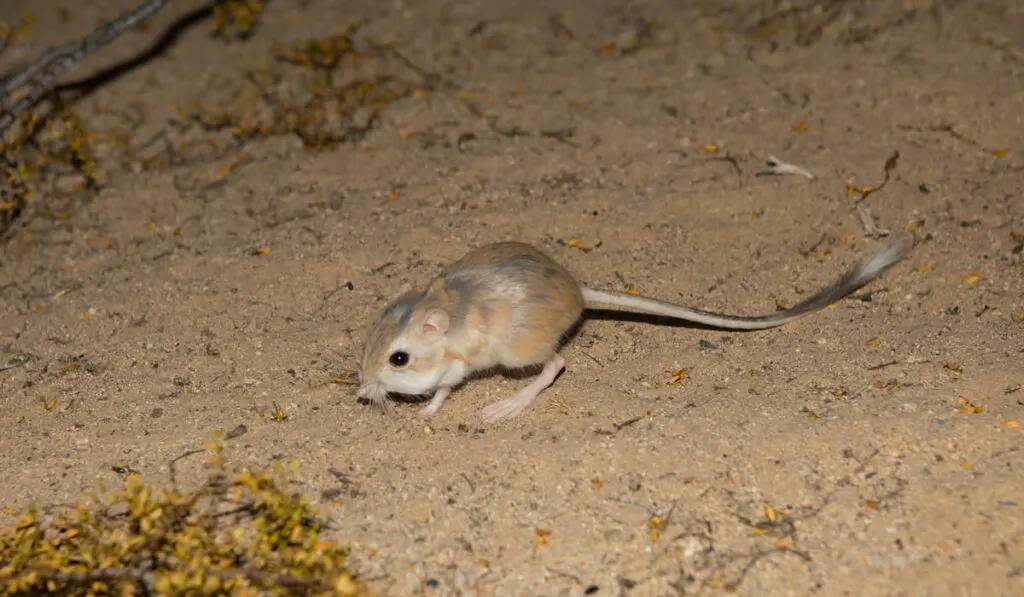
These cute rats developed long hind legs that help them to look like kangaroos. They also have very long tails. The rats are nocturnal and prefer to look for their food at night. They eat insects, scorpions, and spiders. However, they can also eat plant products if they cannot find invertebrates.
28. Spider (Araneae)
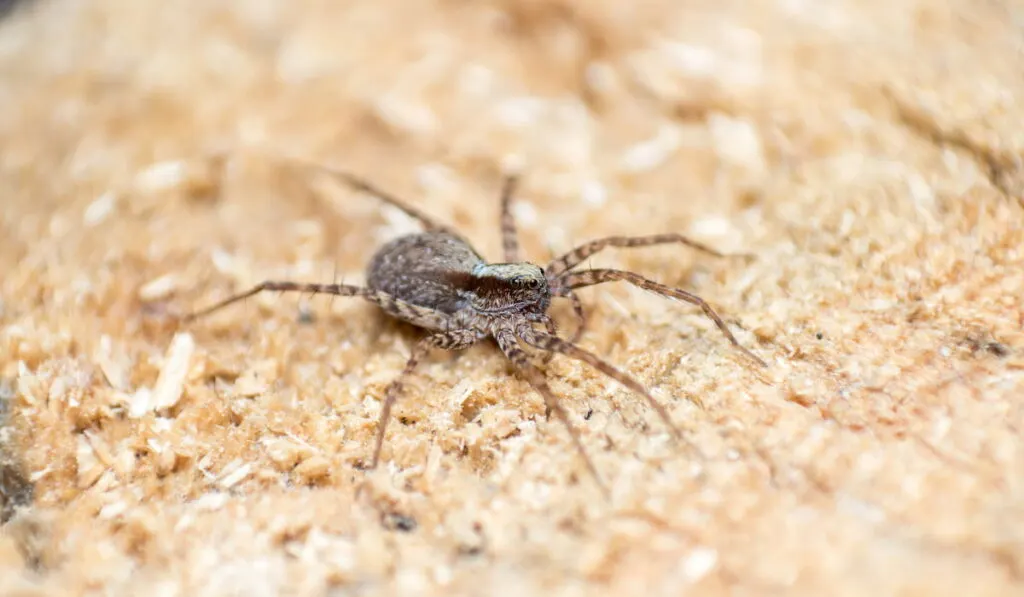
Just like insects, spiders are found everywhere. While there are spiders in the desert, they are usually found in or near trees or other forms of shelter that can protect them from the scourging heat.
Spiders mostly make webs so that they can trap their prey. Some large spiders live in caves and hunt unsuspecting prey.
29. Ant (Formicidae)
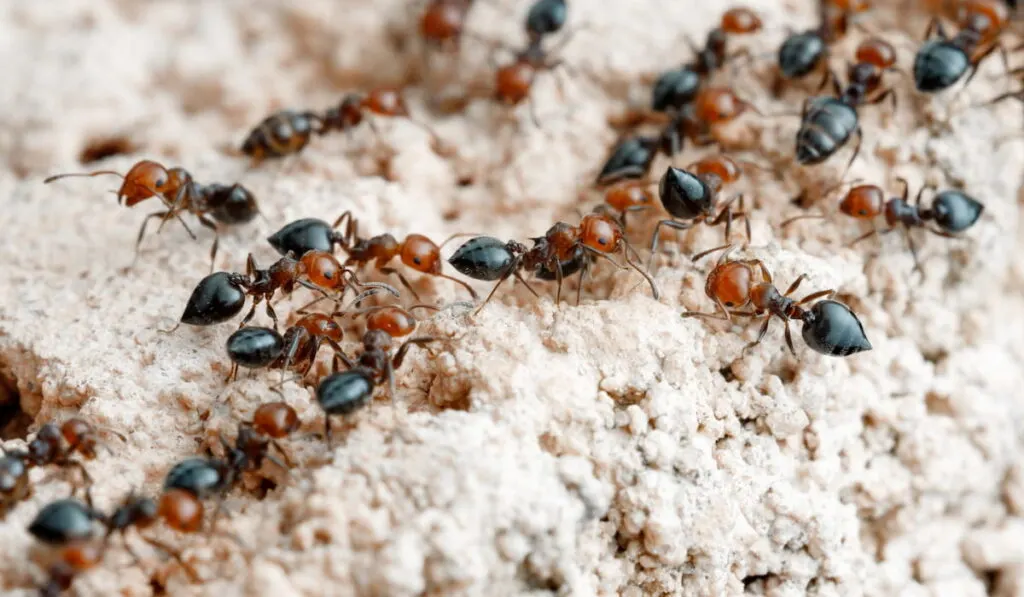
Ants are some of the most successful animals in the world today, as they can be found in almost every ecosystem on every continent except Antarctica.
There are so many types of ants in the desert, and like other ants found in other places, desert ants build their shelter (anthills) by themselves and live in groups. Depending on the species, these ants are active either during the day or at night.
30. Chameleon (Chamaeleonidae)

Chameleons are beautiful reptiles that are very popular because they can change their colors. In the past, people believed they could change their colors at will, especially to match the color of their environment. However, recent studies have shown that chameleons have limited colors and only change their color to match their mood.
They can be found in caves and other forms of shelter in deserts. They are also found in grasslands and forests.
31. Toad (Bufo bufo)

Toads are amphibians that you can find on land. While they do not live in most deserts, you can find them in the parts of deserts that are close to water bodies. Toads hatch in water but leave the water for land when they become adults. The adult forms of toads may actively move and search for food (insects and invertebrates) at night in the desert.
32. Roadrunner (Geococcyx Spp.)
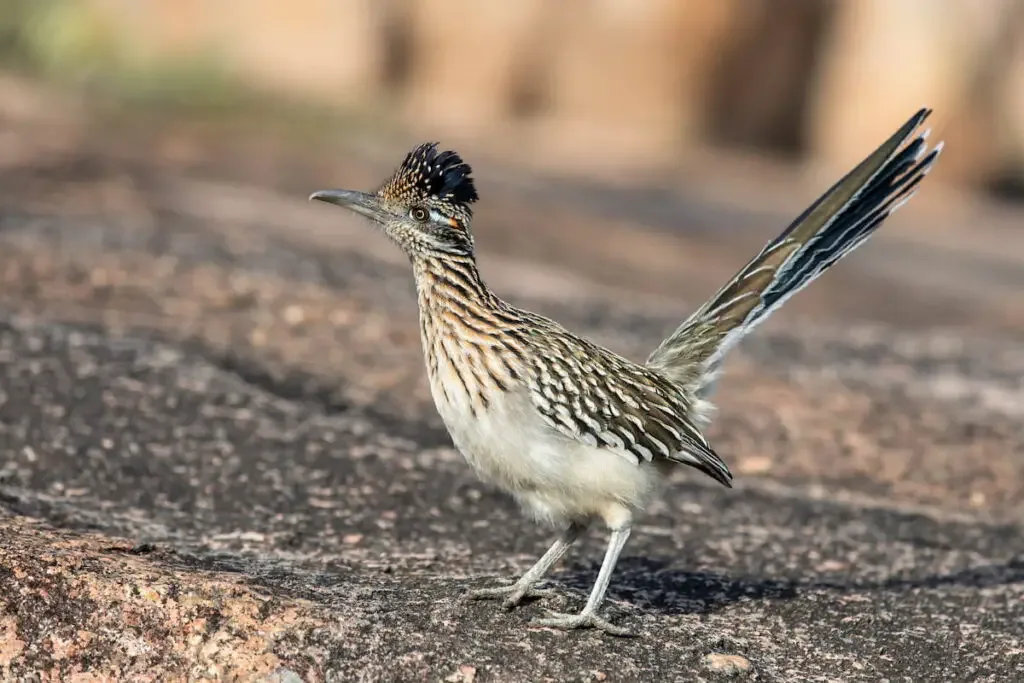
Roadrunners are fast-running, desert-dwelling birds that hunt lizards and other prey. Even though roadrunners can fly, they prefer to run and can run as fast as 26 mph (42 km/h). They are often preyed upon by other desert-dwelling animals, such as coyotes, but often escape due to their speed and ability to fly when running.
33. Desert Monitor (Varanus griseus)

This large lizard species lives in deserts found in South Asia and North Africa. The desert monitor is carnivorous and eats rats, other lizards, insects, and any little animals it can find. It has a long tail that it can use to defend itself (by swiping) at any predator that comes too close.
Conclusion
As you can see, so many types of animals can be found in the desert. These animals have their specific roles and make the desert a fun place to study. Remember that many of these animals are dangerous, so you do not want to mess with them.

